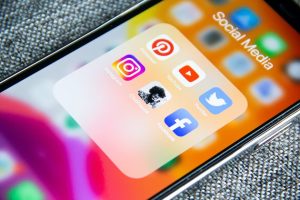If you’re a mobile app developer, you know that creating an app is only half the battle. The other one is getting people to download and use it. This is where a mobile app landing page comes in.
A well-designed landing page can help you attract potential users, convince them to download your app, and ultimately increase your downloads. In this post, we’ll go over what a mobile app landing page is and the elements you need to create an effective one.
What is a Mobile App Landing Page?
A mobile app landing page is a web page specifically created to promote your mobile app. It’s the first impression potential users will have of your app, so it’s crucial that it’s well-designed and engaging.
The purpose of a landing page is to encourage people to download your app by highlighting its features and benefits. So, it should provide an easy way for users to download it, whether that’s through the app store or a direct link.
Elements of an Effective App Landing Page

Creating an effective mobile app landing page takes more than just a flashy design. There are several key elements you need to include to ensure your landing page is successful. Let’s dive into them!
1. The Call-to-Action
The call-to-action (CTA) is arguably the most important part of your landing page. It’s the button or link that encourages users to download your app. And, to be effective, it should be prominent, clear, and compelling.
In order to do it, you should use action-oriented language such as “Download now” or “Get started,” to encourage users to take action.
It’s also important to consider the placement of your CTA. It needs to be prominently displayed and easy to find. You can experiment with different colors and styles to make it stand out.

2. The Headline
Your headline is the first thing users will see when they land on your page, so it needs to be attention-grabbing and informative. It should clearly convey what your app does and how it benefits users.
Keep it short and sweet, ideally no more than 10 words. Consider using a subheading to further explain your app’s value proposition. This can help reinforce your message and persuade users to download your app.
3. The Body Copy
The body copy is where you can provide more detailed information about your app. Keep it concise and easy to read. You can use bullet points and short paragraphs to break up the text and make it more scannable.
This is your chance to highlight your characteristics and unique selling points. Make sure to focus on the benefits of your app rather than just the features. Users want to know how your app can improve their lives, not just what it does.
4. Social Proof
Social proof is a powerful tool for persuading users to download your app. People are more likely to do something if they see others doing it. So, including this on your landing page can help build trust and credibility with potential users.
There are several ways to incorporate it. Customer reviews and testimonials are a great option, as are user ratings and awards. You can also include logos of well-known companies or media outlets that have featured your app.
5. Attractive Media
Finally, it’s important to include attractive media on your landing page. This includes images, videos, and animations that showcase your app’s features and benefits. Visuals are more engaging than text alone, so include plenty of eye-catching ones.
When choosing images or videos, make sure they’re high-quality and relevant to your app. Avoid stock photos and nonspecific graphics, as these can make your landing page look generic and unprofessional. Instead, opt for custom visuals that showcase your app in the best possible light.
Additional Elements
When it comes to creating an effective app landing page, there are a few additional elements to consider. These elements can help take your landing page from good to great and increase your chances of success.
One such element is the use of a hero image or video. This is a large, attention-grabbing visual that sits at the top of your landing page. A hero image or video can help convey the look and feel of your app and give users a taste of what they can expect.
Another important element is social media integration. Including social media icons or links on your landing page can make it easy for users to share your app with their friends and followers. This can help increase your app’s visibility and attract more potential users.
Consider adding a FAQ section to your landing page. This can help answer any questions potential users may have about your app and alleviate any concerns they may have. A well-crafted FAQ section can also help build trust and credibility with potential users.
By including these additional elements in your landing page design, you can create a more engaging and effective experience for potential users.
Conclusions
Creating an effective mobile app landing page takes time and effort, but it’s worth it in the end. By including the elements we’ve discussed in this post, you can create a landing page that attracts potential users, convinces them to use your app, and ultimately increases your downloads.
Remember to keep your landing page simple, clear, and focused on the benefits of your app. Use attractive visuals and social proof to build trust with potential users, and make sure your call-to-action is prominent and compelling.
With these tips in mind, you can create a landing page that stands out from the competition and helps your app succeed. What are you waiting for to put them into practice?







